The Gibson-Todd House/Site of John Brown's Execution
Introduction
Text-to-speech Audio
Images
Gibson-Todd House exterior
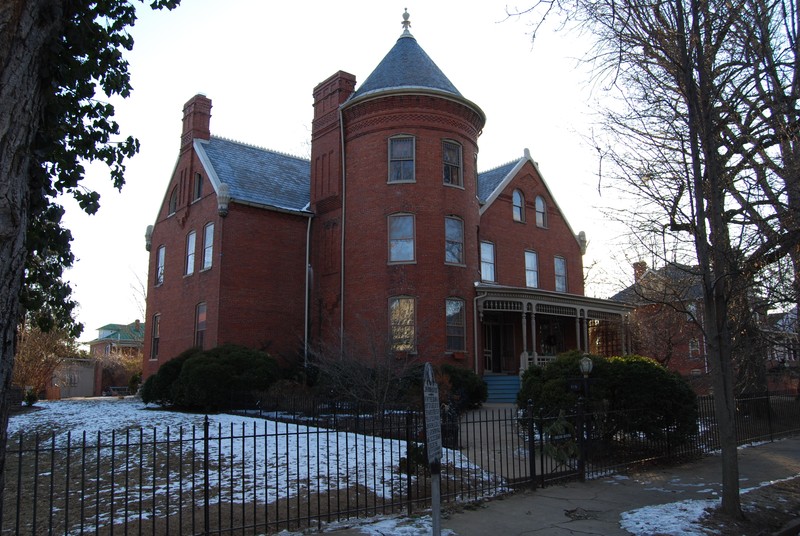
John Brown in 1859
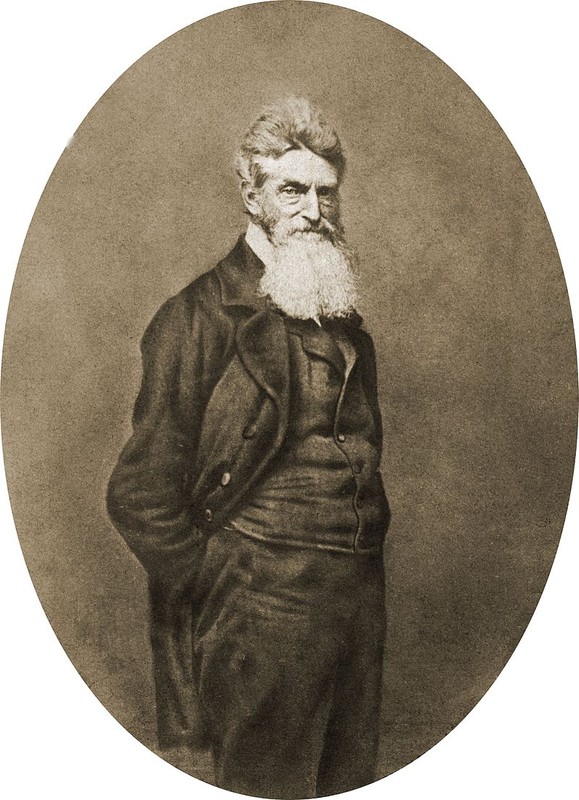
"Treason" Broadside, 1859 November 4. Somersworth. (The Library of Virginia) Many in the north considered Brown a martyr and this lead to the high security around his December execution.
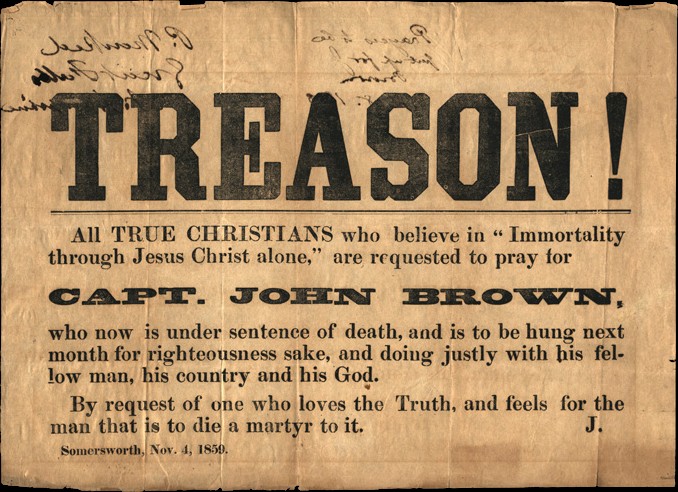
"Brown riding on his coffin to the place of execution" (Library of Congress)
_LCCN99614097.jpg)
"Brown, sitting on his coffin on his way to the gallows. Note lines of soldiers on both side, to avoid a rescue" (New York Public Library)
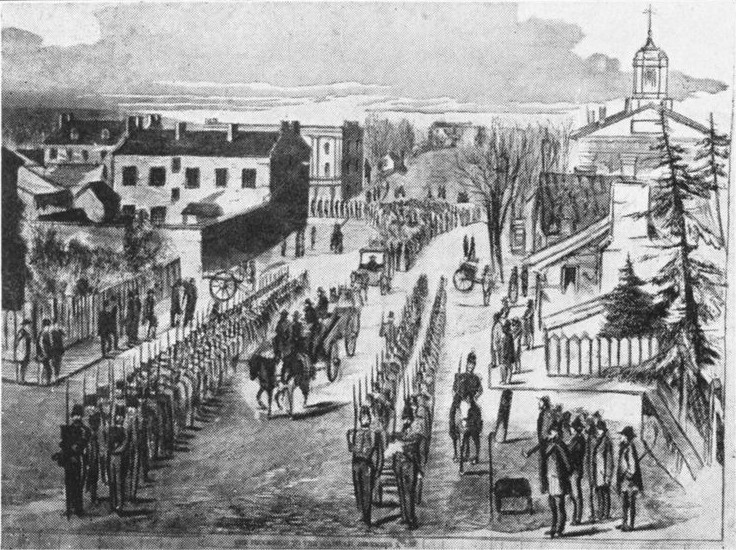
The Execution of John Brown, In a Stubble Field, Near Charlestown, Va. From Frank Leslie’s Illustrated Newspaper, 10 December 1859. (Virginia Historical Society)
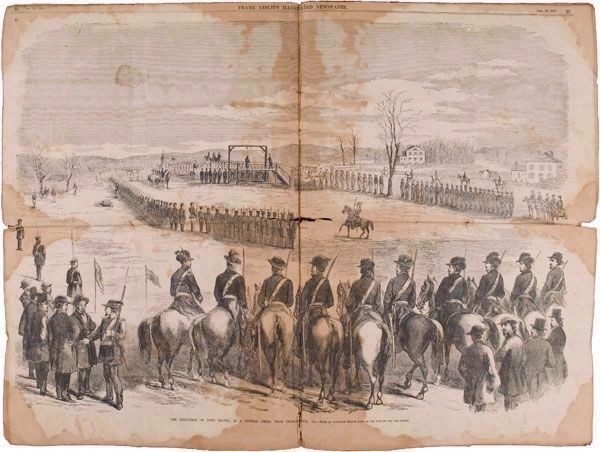
John E. Cook, executed on December 16, 1859
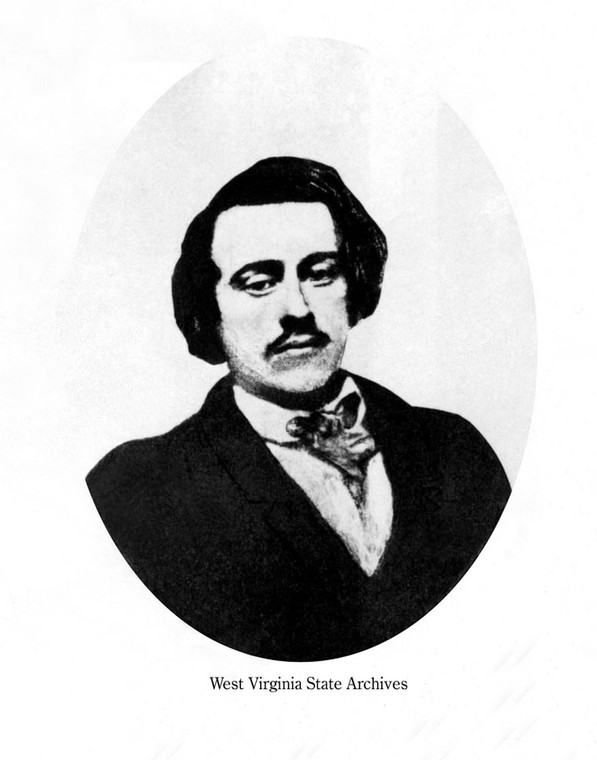
Edwin Coppic/Coppock, executed on December 16, 1859. His brother Barclay also participated in the Brown raid but escaped and later died fighting for the Union in the Civil War.
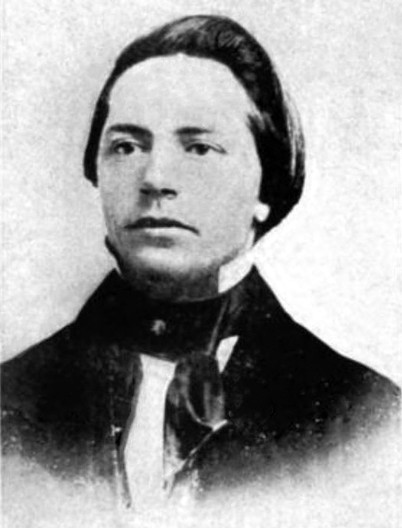
Sketch of Shields Green awaiting trial in 1859. Green was executed on December 16, 1859.
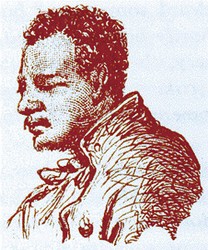
Shields Green, John Copeland, and Albert Hazlett in their jail cell. (Frank Leslie's Illustrated Newspaper, December 10, 1859)
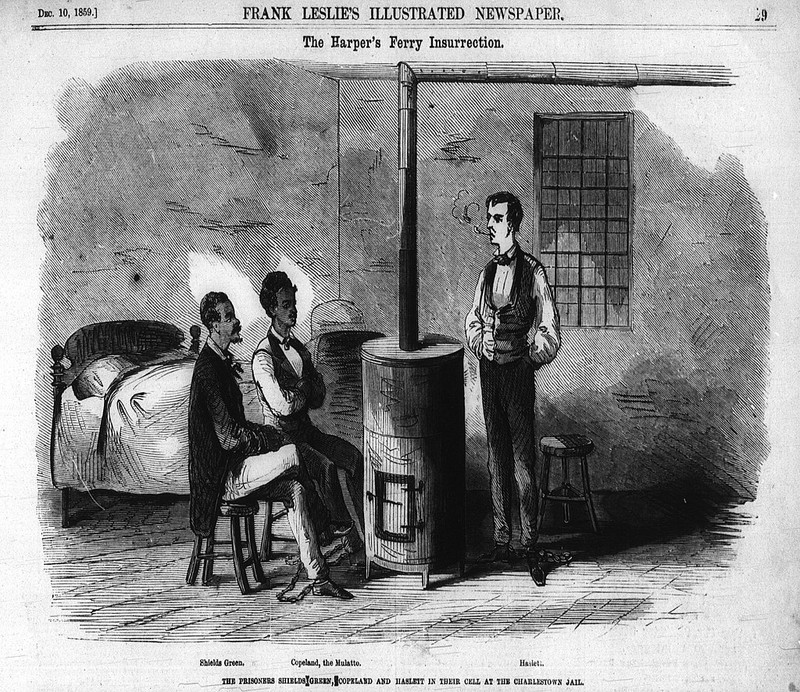
John Copeland, executed December 16, 1859.
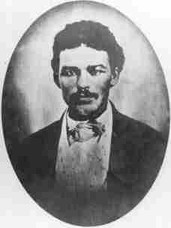
Aaron Stevens, executed March 16, 1860.
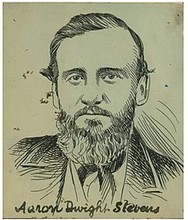
Albert Hazlett, executed March 16, 1860.
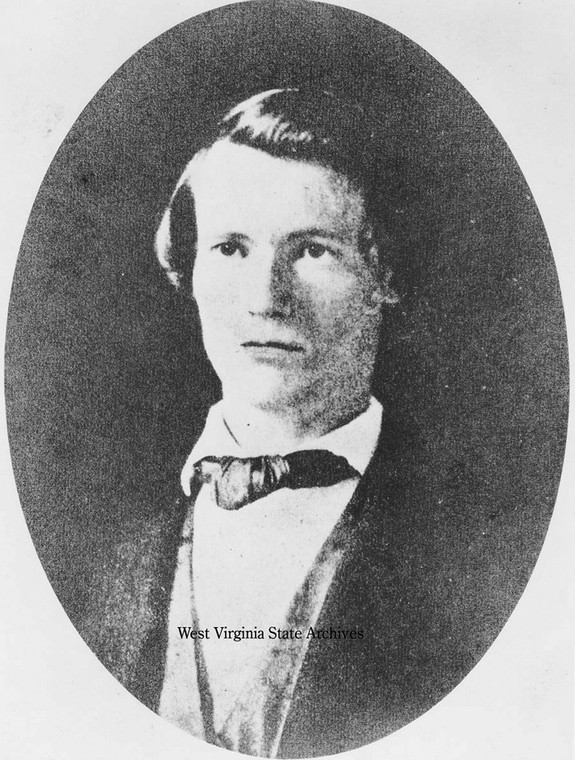
"The Arraignment." John Brown, John Copeland, Edwin Coppic, Shields Green, and Aaron Stevens are shown being arraigned in the Jefferson County courthouse in Charles Town on October 25. Sketch by Porte Crayon. Harper's Weekly, November 12, 1859
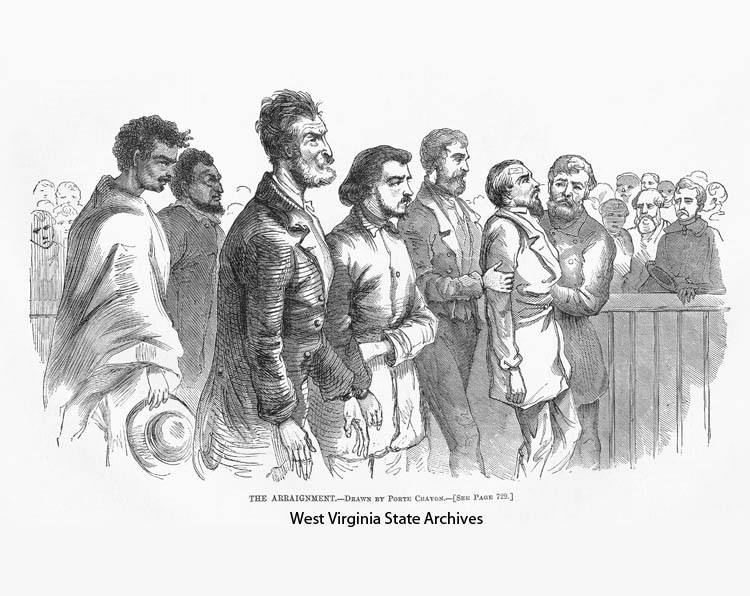
The Gibson-Todd House in 1898 (West Virginia & Regional History Center)
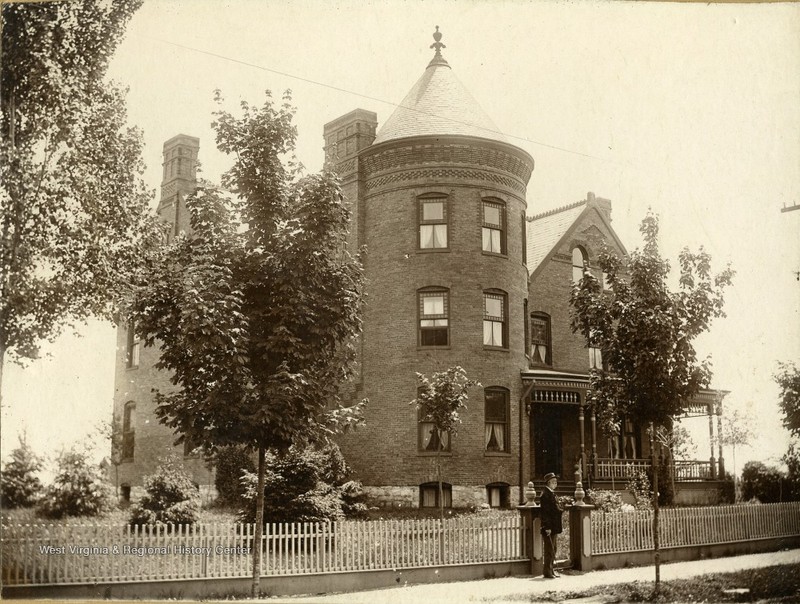
"Portrait of John Thomas Gibson sitting on the front porch of his Charles Town, W. Va. home. Mr. Gibson is sitting in his father's (James Gibson) chair." (West Virginia & Regional History Center)
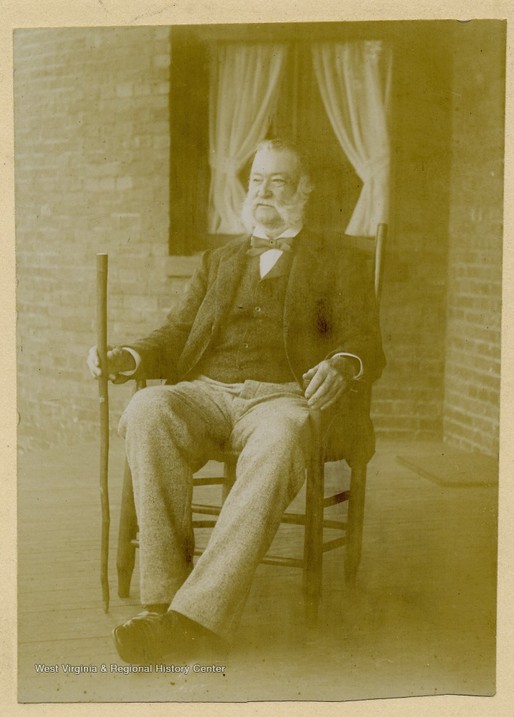
Gibson made a monument marking the scaffold site out of stone from the original Charles Town Jail where Brown was held during his trial.
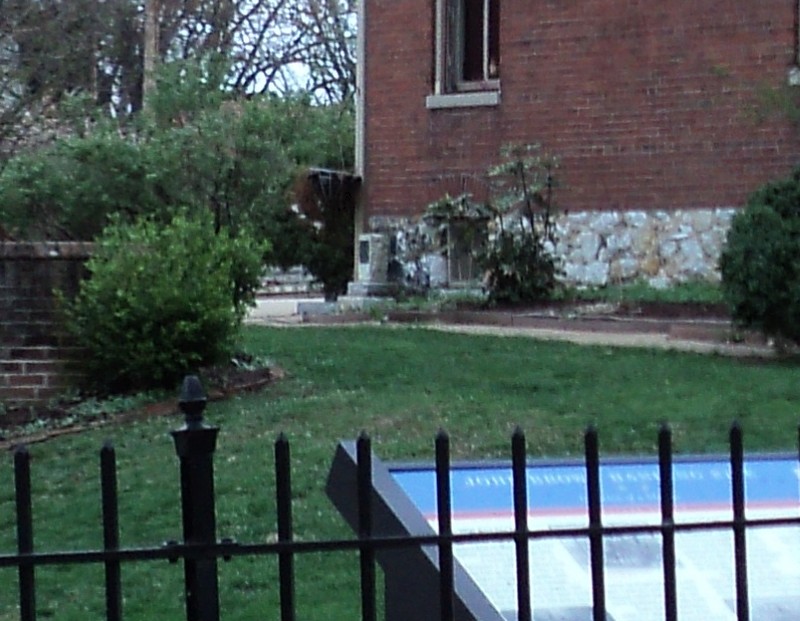
Monument to the Brown execution site
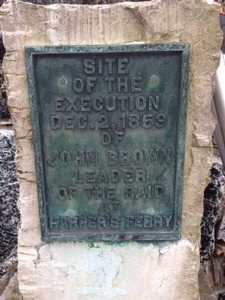
Civil War Trails Marker: John Brown's Hanging Site
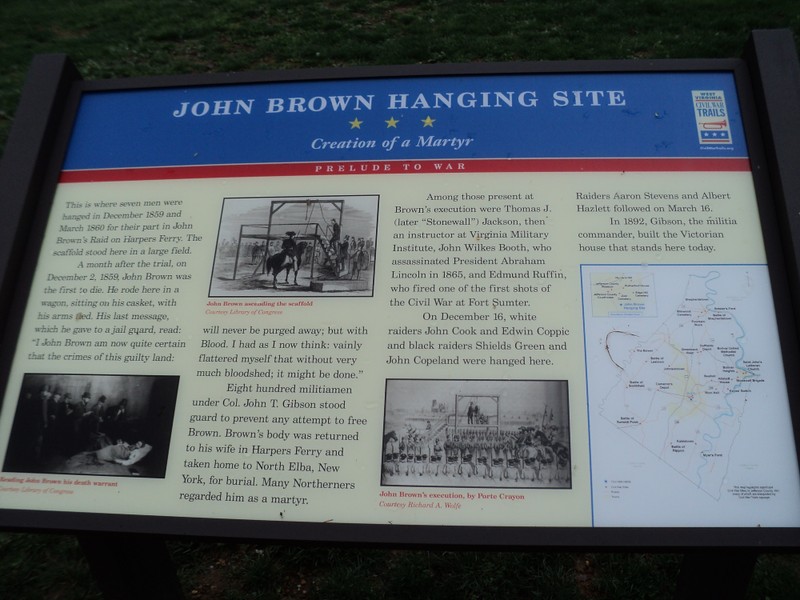
John Brown Scaffold Marker
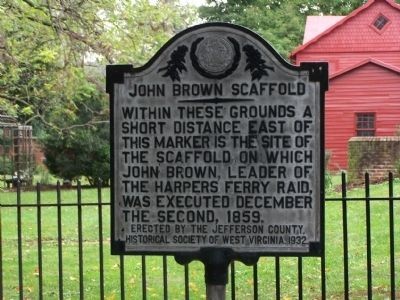
Backstory and Context
Text-to-speech Audio
The execution of John Brown and his men occurred on the property of what is now the Gibson-Todd House. John Brown, a staunch abolitionist, along with 18 men raided Harpers Ferry, VA on October 18, 1859 with the plan to seize the weapons and ammunition there, distribute them to slaves, and create a mass slave rebellion to take down the institution by force. His plan ultimately failed and Brown with several of his surviving men were arrested and placed on trial in Charles Town. Brown and six of his men were sentenced to death by hanging for treason and murder. In 1859, Academy Street was the southern boundary of Charles Town and the land south was open field. For security reasons, largely the need to use militia to secure the site and prevent any attempted rescue of Brown, the field owned by Rebecca Hunter was chosen as the execution site. There were three separate executions here connected to the Brown Raid. John Brown was hanged first on December 2, 1859. Four of the raiders—John E. Cook, Edwin Coppic, Shields Green, and John Copeland—were executed on December 16, 1859. The two final Brown raiders—Aaron Stevens and Albert Hazlett—were hanged here on March 16, 1860.
The Gibson-Todd House was built for John Thomas Gibson (1825-1904). Gibson served in the Virginia House of Delegates in 1851-1853 and again in 1859-1861, participating in the session that made the decision for Virginia to secede from the Union prior to the Civil War. In 1859, Gibson commanded the county’s unit of the Virginia militia, known as the “Jefferson Guards of Charles Town,” and his men were the first troops to respond to John Brown’s Raid on Harpers Ferry. Gibson also commanded the 800 militia posted at John Brown’s execution in December 1859 to secure the scaffold and prevent any attempts to free Brown before he was executed. For his actions Gibson was given an original copy of Brown’s “Chatham Constitution” and the table on which Brown’s death warrant was signed. Gibson fought for the Confederacy during the Civil War and was paroled at Appomattox Courthouse with General Robert E. Lee’s army.
After the Civil War Gibson was Mayor of Charles Town and on the Jefferson County Commission. He constructed this house in 1891 on the site of John Brown’s execution. The house is a 2.5 story brick Victorian Era home with 18 rooms and a three-story tower in the Norman style. It follows “eclectic design principles” popular in the period and combines Norman, Romanesque, and Queen Anne architectural and design elements. The architect who designed the Gibson House, Thomas A. Mullett, also designed the Charles Town Opera House and Charles Town Jail. John T. Gibson lived in the house until he died in 1904 and the house remained in the family for many more years. His son, Braxton D. Gibson, served in the West Virginia Legislature from 1889-1891. His daughter Anne married William Bainbridge Packette, a great-great nephew of George Washington. Anne and William Packette’s only child was Frances Packette who married Augustine J. Todd in 1925. She inherited the house (thus the Gibson-Todd name) and owned it until the 1980s. In 1982, Frances Packette Todd deeded the house to the National Trust for Historic Preservation. The Gibson-Todd was sold into private hands in 2015.
On the property, near the foundation of the house, is a monument to the execution site of John Brown. This was erected by John T. Gibson sometime after 1873. The stone of the marker is from the original Jefferson County Jail where Brown was held during his trial. The Jail was located across from the Jefferson County Court House (where the U.S. Post Office is now) and it was heavily damaged during the Civil War. A second jail was built on the same site in 1873, so it is likely that this is when Gibson acquired the stone to erect this monument. The new jail on George Street was constructed in 1919 and the Post Office building was built in 1922, both occurring after Gibson’s 1904 death.
Sources
“Gibson-Todd House first in series on ‘House & Garden Tour.’” The Journal. March 27, 2017. Accessed February 19, 2021. https://www.journal-news.net/life/home-and-garden/gibson-todd-house-first-in-series-on-house-garden-tour/article_234c2510-8de3-5b1c-999a-86a2575ad8e1.html.
“John Brown Hanging Site: Creation of a Martry.” The Historical Marker Database. Accessed February 20, 2021. https://www.hmdb.org/m.asp?m=41650. (Civil War Trails Marker)
“National Register of Historic Places—Nomination Form: Gibson-Todd House/John Brown Hanging Site.” Accessed February 19, 2021. http://www.wvculture.org/shpo/nr/pdf/jefferson/83003238.pdf.
"National Register of Historic Places Registration Form--South Charles Town Historic District." Accessed February 16, 2021. http://www.wvculture.org/shpo/nr/pdf/jefferson/09000733.pdf.
“Walking Tour of Charles Washington’s Town: Walk in the Footsteps of History.” City of Charles Town and Jefferson County Convention & Visitors Bureau. Accessed February 19, 2021. https://s3.amazonaws.com/discoveritallwv.com/JCHS_CTTourBrochure.pdf.
"John Brown (abolitionist)." Wikipedia. Accessed February 20, 2021. https://en.wikipedia.org/wiki/John_Brown_(abolitionist).
"John Brown (abolitionist)." Wikipedia. Accessed February 20, 2021. https://en.wikipedia.org/wiki/John_Brown_(abolitionist).
"John Brown (abolitionist)." Wikipedia. Accessed February 20, 2021. https://en.wikipedia.org/wiki/John_Brown_(abolitionist).
"John Brown (abolitionist)." Wikipedia. Accessed February 20, 2021. https://en.wikipedia.org/wiki/John_Brown_(abolitionist).
"Site of the Execution of John Brown." The Historical Marker Database. Accessed February 20, 2021. https://www.hmdb.org/m.asp?m=62250.
"'His Soul Goes Marching On': The Life and Legacy of John Brown. A West Virginia Archives and History Online Exhibit." Accessed February 20, 2021. http://www.wvculture.org/history/jbexhibit/bbsph05-0013.html.
"Barclay and Edwin Coppock." Wikipedia. Accessed February 20, 2021. https://en.wikipedia.org/wiki/Barclay_and_Edwin_Coppock.
"Shields Green." Wikipedia. Accessed February 20, 2021. https://en.wikipedia.org/wiki/Shields_Green.
"Shields Green." Wikipedia. Accessed February 20, 2021. https://en.wikipedia.org/wiki/Shields_Green.
"Tar Heels at Harpers Ferry, October 16-18, 1859: John Anthony Caopeland." NCpedia. Accessed February 20, 2021. https://www.ncpedia.org/copeland-john-anthony.
"Aaron Dwight Stevens." Wikipedia. Accessed February 20, 2021. https://en.wikipedia.org/wiki/Aaron_Dwight_Stevens.
"'His Soul Goes Marching On': The Life and Legacy of John Brown. A West Virginia Archives and History Online Exhibit." Accessed February 20, 2021. http://www.wvculture.org/history/jbexhibit/bbsph05-0024.html.
"John Brown." West Virginia Archives & History. Accessed February 20, 2021. http://www.wvculture.org/history/gallery/jb/jb27.html.
"Residence of John Thomas Gibson, Charles Town, W. Va." West Virginia History OnView. West Virginia & Regional History Center. Accessed February 19, 2021. https://wvhistoryonview.org/catalog/037814.
"Portrait of John Thomas Gibson of Charles Town, W. Va." West Virginia OnView. West Virginia & Regional History Center. Accessed February 19, 2021. https://wvhistoryonview.org/catalog/037763.
"John Brown Hanging Site: Creation of a Martyr." The Historical Marker Database. Accessed February 19, 2021.
"Site of the Execution of John Brown." The Historical Marker Database. Accessed February 20, 2021. https://www.hmdb.org/m.asp?m=62250.
"John Brown Hanging Site: Creation of a Martyr." The Historical Marker Database. Accessed February 19, 2021.
"John Brown Scaffold." The Historical Marker Database. Accessed February 19, 2021. https://www.hmdb.org/m.asp?m=12603.
